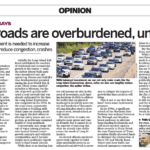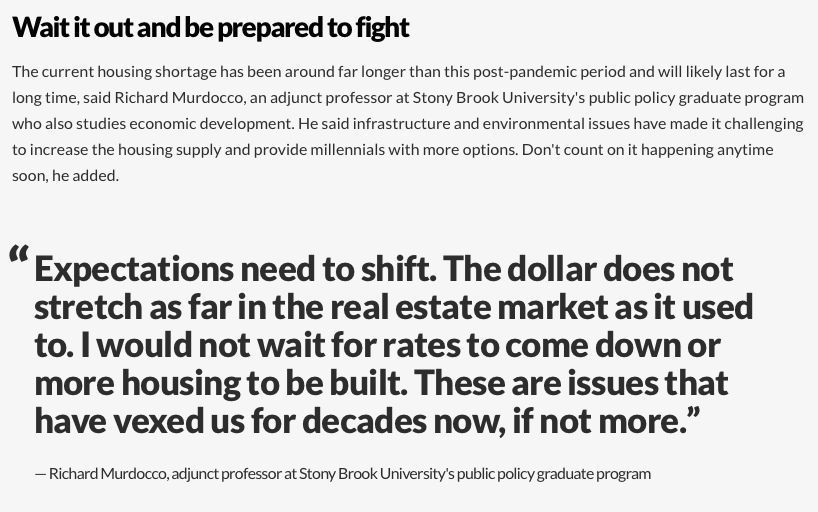The following a sponsored post written by an advertiser. For more information on the separation between sponsored content and The Foggiest Idea’s reported work and data-driven analysis, click here.
By Paul J. Napoli
Suffolk County officials have spent more than $5 million since 2016 combating water poisoning near Gabreski Airport, and now it appears that the promised reimbursement is not forthcoming.
In 2016, based on new research, the Environmental Protection Agency revised its exposure standards to perfluorooctanoic acid and similar chemical compounds. Gabreski Airport is just one of many sites around the United States which moved from quiet bedroom community to hazardous waste site almost overnight. For decades, airport firefighting teams relied on PFOA-laced firefighting foam to deal with jet engine fires and other high-intensity blazes. Over time, the dangerous chemical leaked into the area’s water supply.
The government labeled Gabreski Airport as a Superfund site in September 2016, a designation which normally requires the responsible polluter to bear cleanup costs. But different rules apply to governmental institutions, and the Department of Defense enjoys such a privilege. Officials recently announced that while the DoD would make “cooperative agreements to mitigate locations with PFOS/PFOA drinking water exceedances. . .reimbursement for past expenditures are not authorized.”
Despite the efforts of Senate Minority Leader Charles Schumer (D-NY), who decried the DoD’s “cynical legal tactics and intransigence,” the agency has also refused to pay for cleanup near the former Stewart Air National Guard base in Newburgh.
PFOA Water Poisoning
This chemical forms a barrier between two substances. It was once the primary ingredient in stain-resistant carpet, nonstick frying pan coatings, and other such consumer products. This quality also made PFOA a sought-after chemical in firefighting foams. PFOA was also very cheap, which made it even more attractive to budget-conscious government agencies.
Scientists at 3M first synthesized the chemical in the 1940s; shortly thereafter, the company sold production rights to Teflon manufacturer DuPont Chemical. Even though DuPont knew about the ill health effects of PFOA as early as 1961, it continued using it in great quantities. In fact, when 3M stopped using the chemical in 2000, DuPont built a mammoth production facility in North Carolina, even though PFOA litigation was already underway.
PFOA is a very stable chemical, which partially explains its use in seldom used products like firefighting foam. Unfortunately, once PFOA leaks into the groundwater, it stays there for years, causing health effects like:
● Kidney cancer,
● Low birth weight,
● Liver disease,
● Thyroid disease, and
● Pregnancy-induced hypertension (PIH).
These and other conditions usually involve extremely high medical bills that often last a lifetime. However, these expenses are only part of the story.
In nearby Hoosick Falls, PFOA water poisoning is expected to drive down property values by up to 20 percent over the next several years. Many homeowners who are just now seeing property values rebound after the Great Recession may be in for even more financial pain when they try to sell or refinance. Moreover, many people want to leave communities where the water is unsafe to use. So, in addition to lower property values, remaining Westhampton families may also see higher taxes, as local officials must make up the lost revenue in some way.
Legal Options
Compensation is available for all these economic losses, in addition to noneconomic losses, such as loss of enjoyment in life, pain and suffering, loss of consortium (companionship), and emotional distress. Moreover, in mass tort cases, juries often award substantial punitive damages.
To obtain such compensation, attorneys take the facts, which are very grim in this case, match them with an appropriate legal theory, and place them together to form a compelling case. Negligence is one commonly-used theory in environmental poisoning claims. Essentially, if the defendant failed to act as a reasonable person would have acted, the defendant is liable for damages. Reasonable people do not use dangerous chemicals in a way that jeopardizes the health and safety of other people.
In court, victims must establish negligence by a preponderance of the evidence (more likely than not). Attorneys often partner with scientific experts who explain the chemical’s dangers to the jury. These same processes apply in most nuisance cases, as outlined below.
To prove negligence, the victim/plaintiff must show at least some callousness on the part of the defendant. But there is no “lack of care” element in public nuisance claims, which makes this common-law theory very attractive in these cases. The elements vary in different jurisdictions, but victim/plaintiffs must normally prove that the defendant failed to correct a known public health danger. Typically, victim/plaintiffs must also establish that the potential harm of the activity (which is poison groundwater in this case) outweighs the product’s benefit (a cheap chemical component).
Victims normally have two years to file damage claims once their illness symptoms appear and they connect those symptoms to the defendant’s conduct. Time is important, because this rule is subject to interpretation.
PFOA water poisoning is a serious problem in many areas. For a free consultation with an experienced personal injury attorney in New York, contact Napoli Shkolnik PLLC. We handle mass tort cases on a nationwide basis.
About the author:
Paul J. Napoli is a nationally renowned personal injury, medical malpractice, and mass tort litigation attorney with more than 25 years’ experience in the field. Along with his wife Marie Kaiser Napoli, he aggressively defends the rights of his clients in courtrooms throughout the country, fighting to ensure they get the maximum amount of compensation they deserve. Trusted by those he represents and respected by his colleagues in the legal field, he has a well-earned reputation for integrity and honesty, and a dedication to ensuring justice is served.











